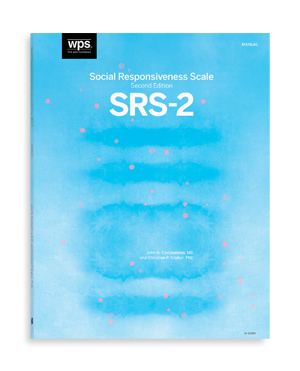Social Responsiveness Scale, Second Edition (SRS-2) identifies the presence and severity of social impairment within the autism spectrum and differentiates it from that which occurs in other disorders. 
Social Responsiveness Scale, Second Edition
SRS-2
Social Responsiveness Scale, Second Edition (SRS-2) identifies the presence and severity of social impairment within the autism spectrum and differentiates it from that which occurs in other disorders.‹ View all tests and materials
SRS-2 Manual
9780749167431
Qualification Level
B
£156.50